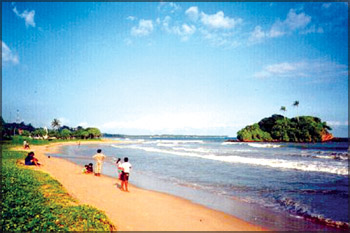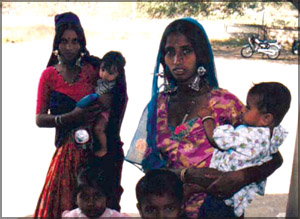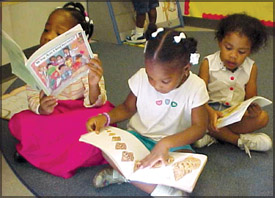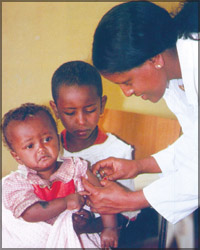|

Protecting the coastline of Matara
A special project has been launched by the Coast Conservation
Department to construct protective dams which would minimise sea erosion and environment pollution along the
coastline of Matara.
which would minimise sea erosion and environment pollution along the
coastline of Matara.
The Department has allocated Rs. 35 million for the project which
would see a 260-metre protective dam being constructed on the Weligama
beach (at a cost of Rs. 6.7 million) and a 142-metre dam constructed at
Kalukanda in Kapparatota (at a cost of Rs. 6.5 million). The building of
a 476-metre long dam at Wellamadama beach, at an expense of Rs. 16.3
million, is also in the pipeline.
One of the first dams to be initiated under this project is the one
at Beliwatta; funding to the tune of Rs. 5.2 million has been earmarked
for this project, which is nearing completion.
Improving the life of gypsies
Gypsies are a part of our community with a population of over 8,000
spread in different parts throughout the country. They had remained a neglected lot for many years, but now
there are measures to integrate them with the rest of the community.
the country. They had remained a neglected lot for many years, but now
there are measures to integrate them with the rest of the community.
The special programme titled 'Ekama Irak Yata' (Under one sun) was
launched by the Social Services and Social Welfare Ministry with this
objective in mind.
The programme comprises both short and long-term projects. The
short-term projects included a function held opposite the Lunawa railway
station to provide medical assistance, wheelchairs, bicycles, birth
certificates, national identity cards and police reports to the gypsy
community.
The long-term projects envisage(foresee) the preserving of the
traditional lifestyle, rituals and beliefs of the gypsy community. It
has also been planned to develop infrastructure facilities for them.
Target - 100 per cent literacy rate
Sri Lanka's current literacy rate stands around 91.5 per cent. This
is a vast improvement from the 50 per cent rate which was reported 50 years ago. Now, the government has set
its sights on the target of a 100 per cent literacy rate by 2011.
cent rate which was reported 50 years ago. Now, the government has set
its sights on the target of a 100 per cent literacy rate by 2011.
Many programmes covering all nine provinces have been launched by the
Education Ministry in this regard. The measures enacted by the
Ministry's Informal Unit include getting children who are not schooling
into the school system and imparting an informal education to illiterate
elders.
Under this, the Ministry will motivate the parents of all children
who are over three years of age to send these children to pre-schools.
The Ministry has also set the school-going age for children at between
five and 14 years. Parents and guardians will be legally obliged to send
children in these age groups to school.
The Ministry will also issue a record book to every student from next
year to replace the single sheet end-of-term assessment reports issued
in some schools. It has been reported that poor quality sheets of paper
are issued to students in some schools as report books. The
well-prepared, printed record book, which will be issued to every
student from 2008, will rectify this matter.
Improving literacy will also be promoted as a means of bringing down
the crime rate. Over 1,000 children of school-going age, including
girls, are jailed every year for various offences. It has been found
that 70 per cent of people committing crimes are illiterate. So, it
makes sense to encourage schooling and reduce the crime rate.
Child mortality hits record low
Deaths of children under the age five around the world dropped below
10 million for the first time last year, according to United Nations Children's Fund (UNICEF) figures released
recently.
according to United Nations Children's Fund (UNICEF) figures released
recently.
UNICEF said deaths in that category hit a record low of 9.7 million
from almost 13 million in 1990, and hailed what it called "solid
progress on child survival."
There were rapid declines in annual under-five deaths in Latin
America and the Caribbean, central and eastern Europe and the former
Soviet republics, East Asia and the Pacific as well as many parts of
Africa, it said.
"This is an historic moment," said UNICEF executive director Ann
Veneman. "More children are surviving today than ever before. Now we
must build on this public health success to push for the achievement of
the Millennium Development Goals (MDGs)."
The poverty-reduction MDGs include a commitment to reduce by
two-thirds the under-five mortality rate between 1990 and 2015.
UNICEF attributed the gains to the widespread adoption of basic
health measures, including early and exclusive breast feeding, measles
immunization, Vitamin A supplements and use of insecticide-treated bed
nets to prevent malaria.
But Veneman warned against complacency (self satisfaction).
"The loss of 9.7 million young lives each year is unacceptable. Most
of these deaths are preventable and, as recent progress shows, the
solutions are tried and tested," she said.
"We know that lives can be saved when children have access to
integrated, community-based health services, backed by a strong referral
system."
Sharp drops have been reported in many countries since the previous
surveys conducted in 1999-2000, with Morocco, Vietnam and the Dominican
Republic cutting their under-five mortality rates by more than one third
while Madagascar did so by 41 per cent and Sao Tome and Principe by 48
per cent, UNICEF said.
Of the 9.7 million children who died in 2006, 3.1 million hail from
south Asia and 4.8 million from sub-Saharan Africa.
The surveys also showed that child mortality in the developing world
is much higher among children living in rural areas and in the poorest
households.
Countries in the developed world report just six deaths for every
1,000 live births.
AFP
Recycling plastic waste
Did you know that a large part of the material found at local garbage
dumping sites comprised plastics? According to the Environment Ministry,
more than 1,256 tons of garbage is disposed in the Colombo district
daily, out of which seven per cent (88 tons) is plastic.
We use a massive quantity of plastics in our day-to-day lives and
find that most of these plastics find their way into garbage dumps after
one or two uses, causing severe environmental hazards. But this problem
would be minimised if plastic was recycled more and reused.
Sri Lanka imports 160,000 metric tons of plastic raw material and
finished products each year. It has been found that over Rs. 32 million
worth of foreign exchange could be saved annually and a large number of
employment opportunities generated if the National Post Consumer Plastic
Waste Management Project (NPCPWMP) is implemented. Plastic, you may
know, is made of fossils.
The fossil reserves of the world are dwindling and there may come a
time when we have no fossils left. Plastic prices will inrease by leaps
and bounds then. Managing this situation through recycling used plastics
is therefore a sound option.
The objective of the NPCPWMP is to create an awareness among the
public about the proper disposal and recycling of plastic so that a
behavioural change could be effected. It was launched two months ago and
currently covers households in 31 local authorities in Colombo and
Gampaha.
The collection centres and warehouses in every local authority will
maintain a smooth network of collectors of plastic waste from
households, while recyclers in the area will be informed about the
plastic waste available in the warehouses.
Developing irrigation projects in Hambantota
The Hambantota district comprises some of the least developed areas
in the island, with the people of these areas lacking access to even basic facilities such as water. The
shortage of water for drinking and irrigation has hampered the people of
these areas for many decades, but a solution is now at hand, through the
Weheragala and Kekiri Obada irrigation projects.
areas lacking access to even basic facilities such as water. The
shortage of water for drinking and irrigation has hampered the people of
these areas for many decades, but a solution is now at hand, through the
Weheragala and Kekiri Obada irrigation projects.
The Weheragala Reservoir project, which will have a capacity of 75
million cubic metres, is expected to develop 14,000 hectares of land.
It will ease the drinking water problem at Kataragama and will
provide four million cubic metres of water to the area every year. The
project, which has been at the planning stage for years, is estimated to
cost Rs. 1,800 million.
The Kekiri Obada Reservoir project in Walasmulla will develop 151
hectares in the area, benefiting 1,500 farmer families. It will also
provide drinking water to Tangalle Kirama and Walasmulla. |
